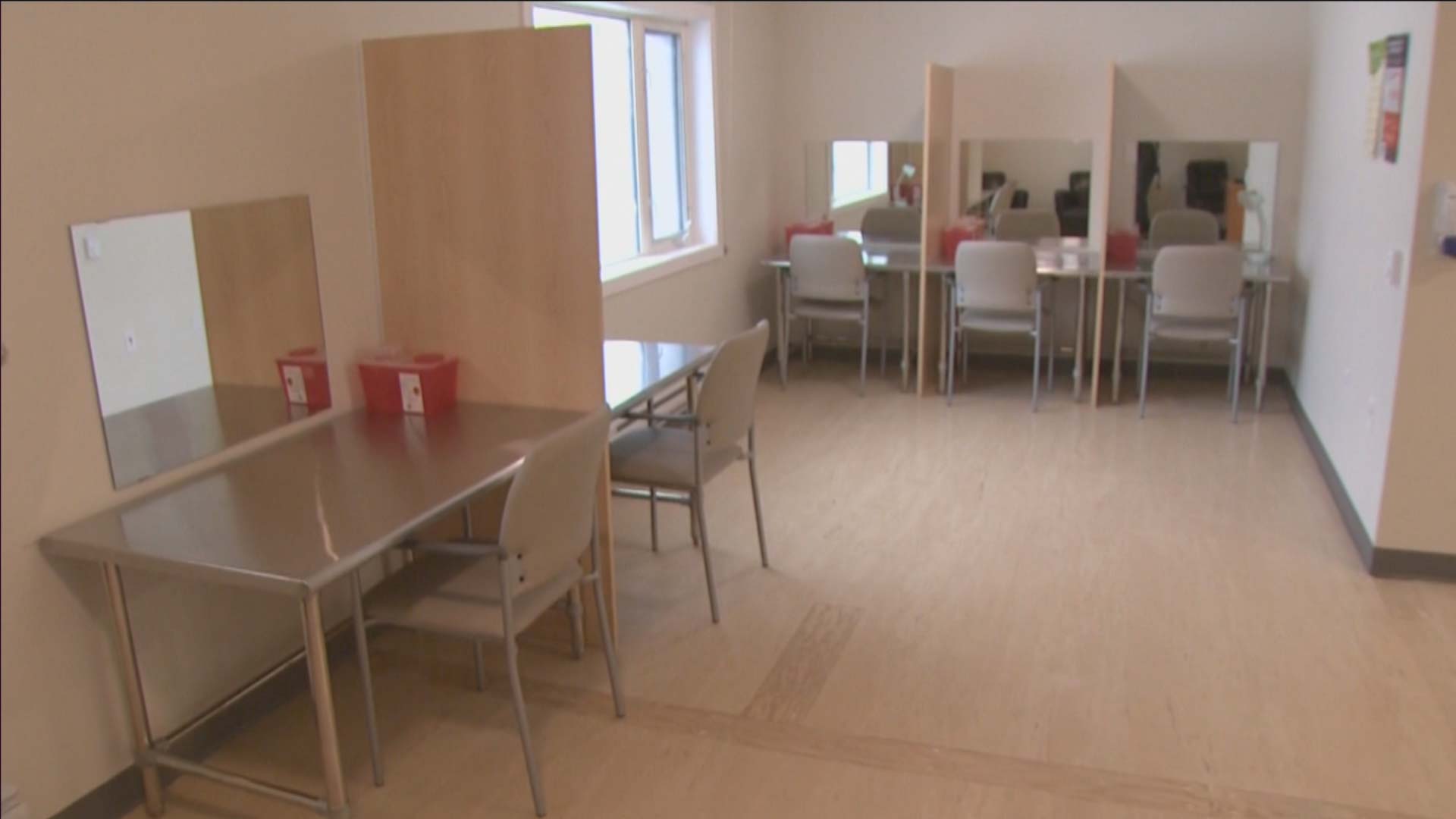It’s a bit bare-bones at the moment, but a modest building in downtown Whitehorse is expected to be a major asset in addressing the Yukon’s overdose crisis.
On Monday media and guests were invited for a tour of the territory’s first supervised consumption site which will open to the public on Sept. 29.
“This is an important step for our community,” said Tracy-Anne MacPhee, minister of health and social services at a press conference before the tour.
“Supervised consumption sites are part of a long-term, comprehensive, people-focused approach to address the harm associated with substance use.”
The site was prompted by the territory’s overdose crisis.
Since 2016, 57 people in the Yukon have died from drug overdose, 47 of which were due to the illicit use of opioids. At least 11 of the deaths were First Nations people.
The site will provide drug users with a safe, clean environment to use pre-obtained drugs in the presence of trained staff.
It will operate under legislation that protects people who use drugs from being arrested while using substances at the site.
It will also connect users with other services, like wound care, withdrawal management and housing supports.
“Our goal is clear, to reduce overdose deaths and to be able to connect people who use drugs to the additional supportive services they may need,” MacPhee said.
A first for the North
The supervised consumption site was originally schedule to open on Aug. 31, but was delayed due to renovations and staff training.
It is part of the Confidence and Supply Agreement supported by both the Yukon Liberal government and the Yukon NDP caucus.
Blood Ties Four Directions centre, a Whitehorse based harm reduction organization, will operate the day-to-day running of the facility.
Brontë Renwick-Shields, executive director for Blood Ties, said there are 37 supervised consumption sites across Canada and that no fatal overdoses have occurred at any of those sites.
She noted the Whitehorse site will be the first of its kind in the northern territories.
“We know supervised consumption (sites) have saved many lives and continue to save lives and they are an extremely important part of ending overdose deaths,” she said.
How does it work?
The site will operate with a nurse as well as an outreach worker to provide clients with supports such as mental wellness or housing.
As the facility is in its early stages and does not yet have full staffing, it will initially operate with a reduced number of clients.
Renwick-Shields says the facility can accommodate two to three clients for the time being, and will eventually have capacity for up to five to six clients.
The site will operate from 10 a.m. to 7 p.m., hours that could change depending on clients’ needs.
To access the site, clients simply knock on the door where staff will do a short intake to see what supports they need. Clients are not required to provide their name or any other identifying information, though they will be asked to provide a code name or alias.
Clients will then be taken to “booths” where they’ll be provided with clean equipment for either oral consumption, injection or snorting.
A healthcare professional will be seated nearby to monitor the site in case of overdose or any other healthcare needs that may arise.
After disposing of any used equipped clients will then be asked to wait in a designated “chill out” area for 30 minutes to ensure overdose does not occur. The area has a TV, computer, board games and snacks to encourage clients to stay at the site post-consumption.
A separate room for inhalation is currently in the process of being retrofitted.
The space will also grow to include First Nations art and cultural supports.
Location concerns
Cameron Grandy, director of mental wellness and substance use services, said some local residents have expressed concern regarding the location of the supervised consumption site, which is in a predominately residential neighborhood.
He said those living near the site have asked for ongoing consultation, as well as stated concerns that the site will invite more drug users to the area.
However, he noted this is a common “myth” surrounding supervised consumption sites and that it’s unlikely it will act as a catalyst for more drug activity in the area.
“Generally, these sites are used by people who are already in the neighborhood, who currently consume in the neighborhood,” he said.
The Yukon government noted in a press release it “will keep the conversation open with residents, local businesses, First Nations governments and non-governmental organizations as the new facility begins operating.”










